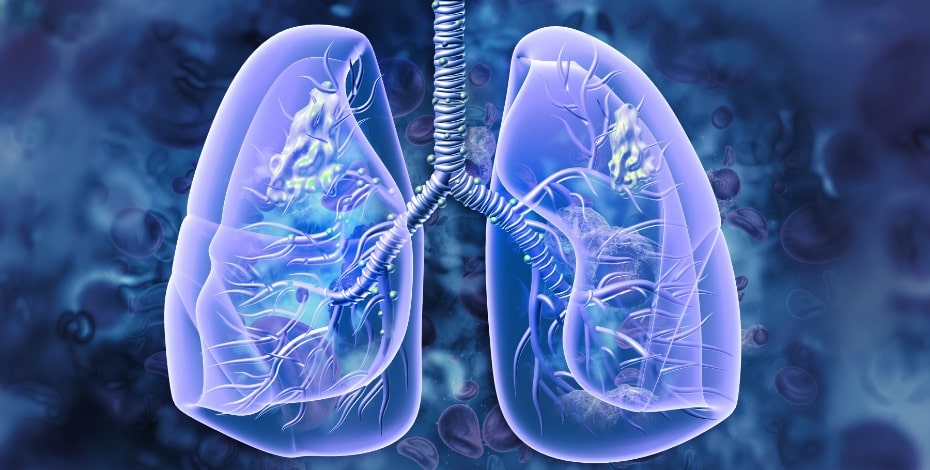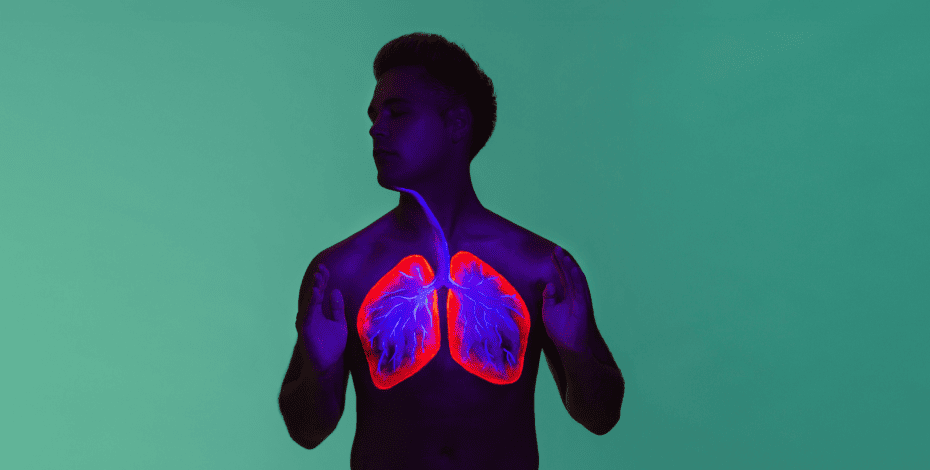
Interstitial lung disease management

Professor Anne Holland published an Invited Topical Review on physiotherapy management of interstitial lung disease in the current issue of Journal of Physiotherapy. Here, she answers questions about the content of the review.
What is interstitial lung disease?
Interstitial lung disease (ILD) is an umbrella term that refers to over 200 different lung conditions characterised by inflammation and/or scarring of the lung tissue.
One of the more common ILDs is idiopathic pulmonary fibrosis, a progressive disease with a five-year survival rate only around 50 per cent.
Other types of progressive ILD include chronic hypersensitivity pneumonitis, an ILD related to autoimmune conditions and sarcoidosis.
Anti-fibrotic medications can be used to slow the decline in lung function, but these drugs do not improve symptoms or quality of life.
There are other ILDs that are characterised by lung inflammation, such as acute hypersensitivity pneumonitis and some connective tissue diseases.
These ILDs tend to be less progressive and have better survival.
What sorts of problems do interstitial lung diseases cause for patients?
ILDs often start with a troublesome dry cough, which may persist for some time before a diagnosis is made.
As the disease advances, people with ILD often develop breathlessness on exertion, which can be very distressing.
Key features of ILDs that are particularly relevant to physiotherapists are exertional oxyhaemoglobin desaturation and exercise limitation.
Physical inactivity and skeletal muscle weakness are also common.
People with ILD may experience exacerbations (acute respiratory deteriorations), which are important events and often portend a poor prognosis.
In-hospital mortality for exacerbation of idiopathic pulmonary fibrosis is around 50 per cent and those who survive may have increased care needs, including long-term oxygen therapy.
What is the range of interventions that physiotherapists could offer people with interstitial lung diseases?
Physiotherapists make a critical contribution to optimal care of people with ILD, with interventions to reduce symptoms, improve exercise capacity and support self-management.
Many physiotherapy interventions are delivered in the outpatient setting, including pulmonary rehabilitation, musculoskeletal management, optimisation of oxygen therapy, education in self-management and preparation for lung transplantation.
Inpatient physiotherapy care is most commonly delivered for patients following exacerbations of ILD, in order to optimise physical function and independence prior to discharge, and in the inpatient phase following lung transplantation.
Pulmonary rehabilitation is a cornerstone of best care and is recommended in clinical practice guidelines for ILD across the world.

Professor Anne Holland's Invited Topical Review looked at physiotherapy management of interstitial lung disease.
Rehabilitation programs for people with ILD include aerobic and resistance exercise training, ILD-specific education, instruction in symptom control strategies (particularly dyspnoea, cough and fatigue) and support for self-management.
There is now strong evidence that pulmonary rehabilitation delivers important improvements in exercise capacity, symptoms and health-related quality of life for people with ILD.
Early referral to pulmonary rehabilitation is desirable, as patients may experience greater benefits earlier in the disease course.
People with ILD related to connective tissue disease (such as rheumatoid arthritis) may have arthropathy that results in reduced joint range of motion, pain and disability.
Treatment may include specific muscle strengthening exercises, exercise to address functional limitations, modifications to aerobic training to reduce joint loading and education regarding self-management of fatigue, pain and stress.
Physiotherapists play a key role in optimising oxygen therapy in ILD.
Exertional hypoxemia may be profound, so it is important to ensure that patients are using an ambulatory device that is able to meet their oxygen needs during physical activity.
As the disease progresses, patients may have increased oxygen requirements, requiring transition to new devices that can deliver higher flow rates.
Optimising the use of ambulatory oxygen requires consideration of how the oxygen device is transported by patients in daily life (eg, backpack, trolley or wheeled walker).
Patients and caregivers frequently report unmet needs for information about using oxygen therapy and physiotherapists can provide education, training and support.
Lung transplantation is a life-saving treatment for people with end stage ILD and physiotherapists are extensively involved in the preparation of patients for surgery, inpatient care in the acute phase following transplantation and post-transplant rehabilitation.
This includes both physical rehabilitation and education on optimal long-term management.
What about areas for future research?
There is a major evidence gap in strategies to manage cough for patients with ILD and physiotherapists are well placed to conduct research in this area.
Although the benefits of pulmonary rehabilitation in ILD are well known, there are still many patients who do not respond as expected.
Future research should test alternative training strategies (including high intensity interval training and high flow oxygen therapy) to optimise rehabilitation outcomes.
There is increasing interest in self-management for patients with ILD, a concept that is well established in other lung diseases although its benefits in ILD are unproven.
Physiotherapists can also support research by encouraging patients to participate in registries and clinical trials, which will be important for expanding treatment options for these relatively uncommon diseases.
>> Anne Holland is Professor of Physiotherapy and Head of Respiratory Research at Alfred Health and Monash University. Anne is a National Health and Medical Research Council Leadership Fellow and she leads a research program investigating non-pharmacological treatments for chronic lung disease.
© Copyright 2024 by Australian Physiotherapy Association. All rights reserved.





